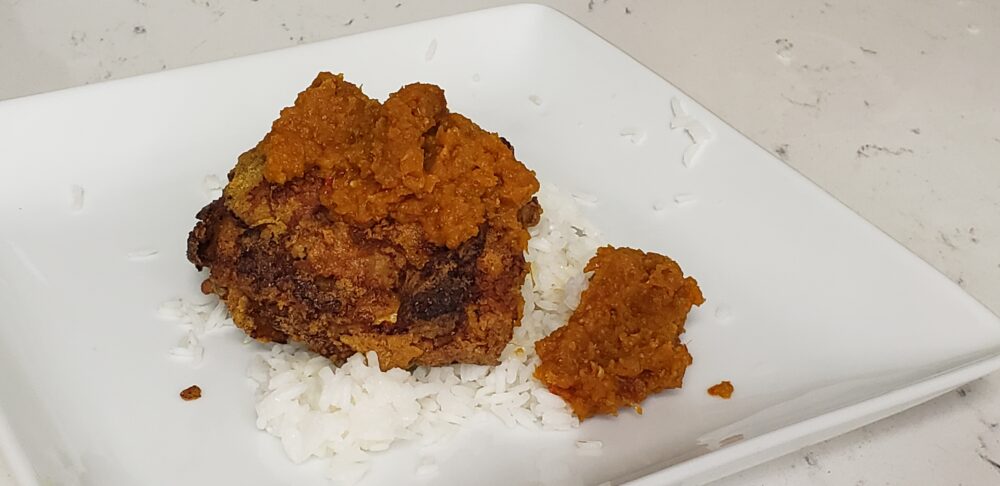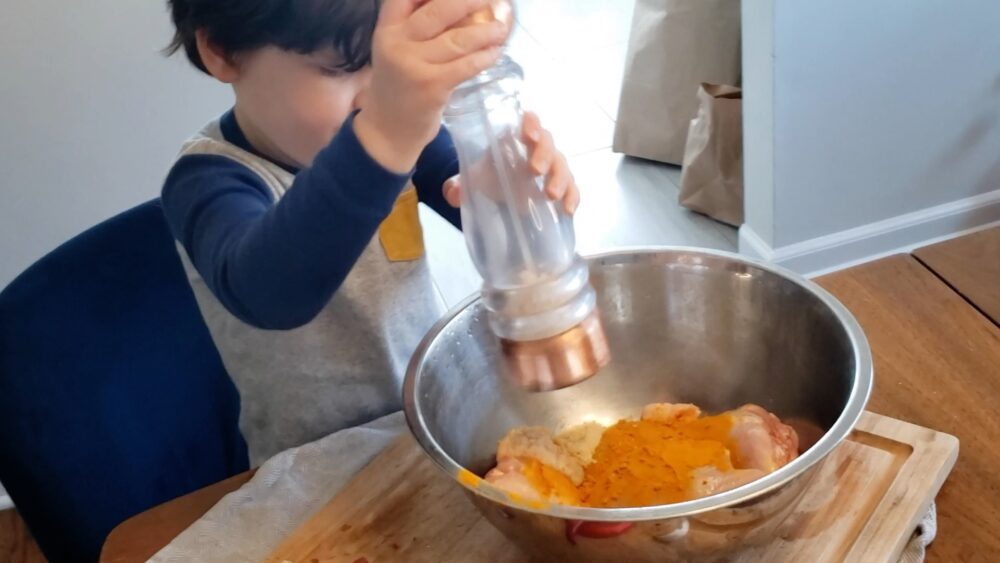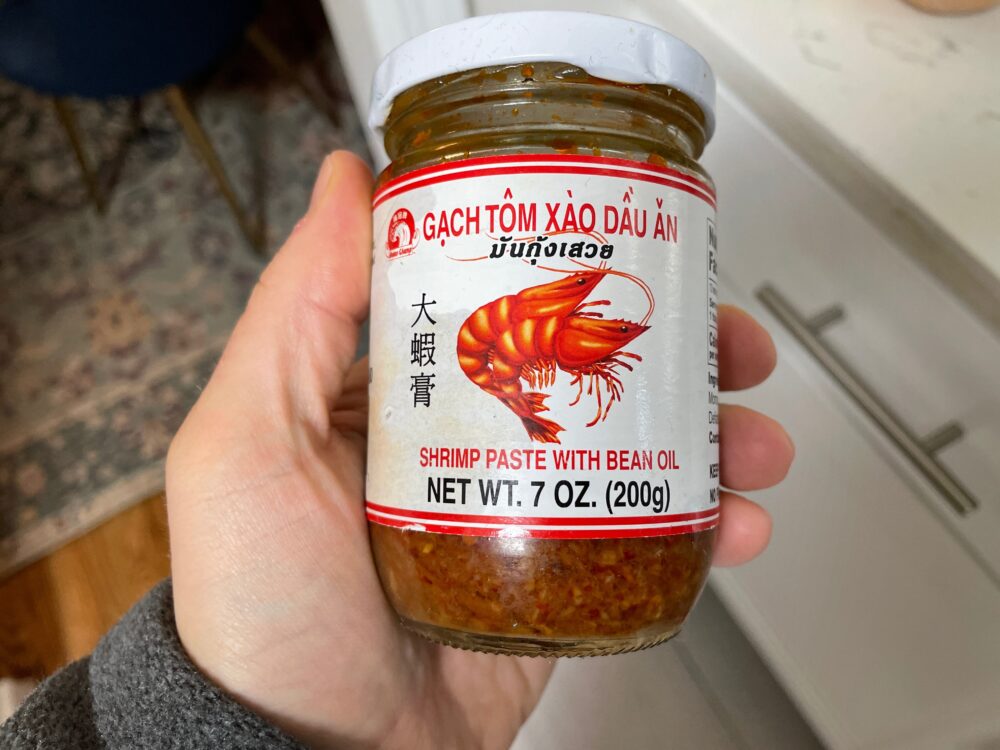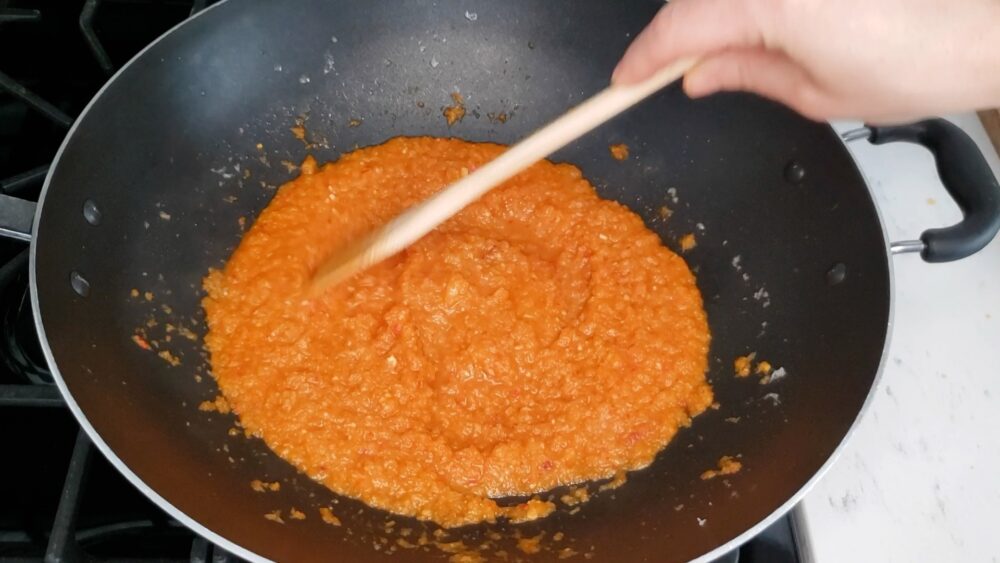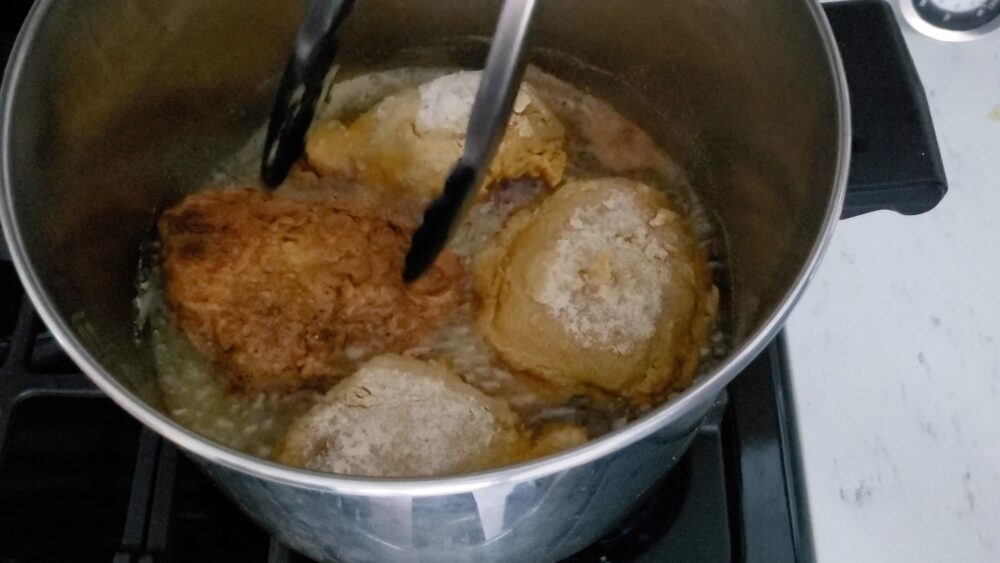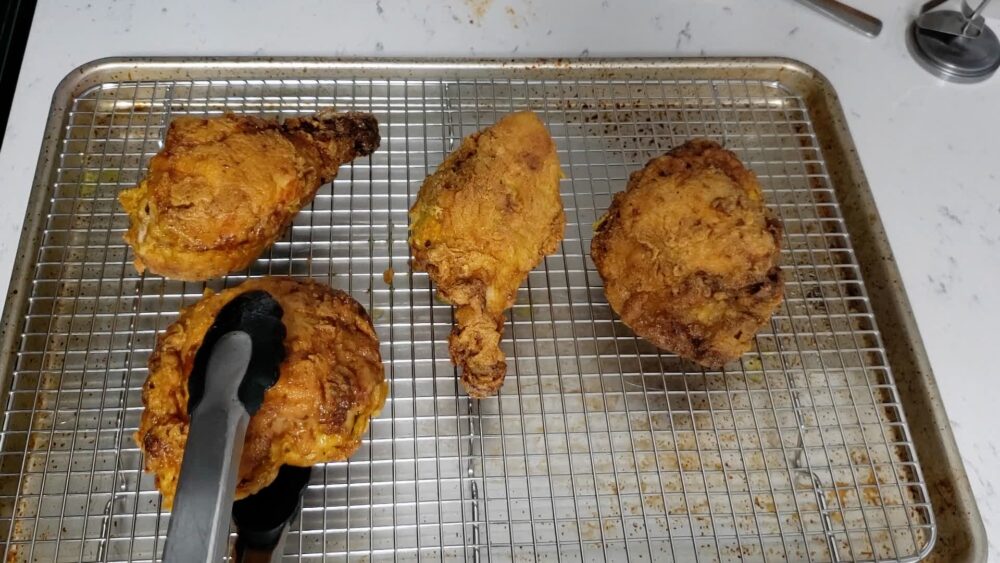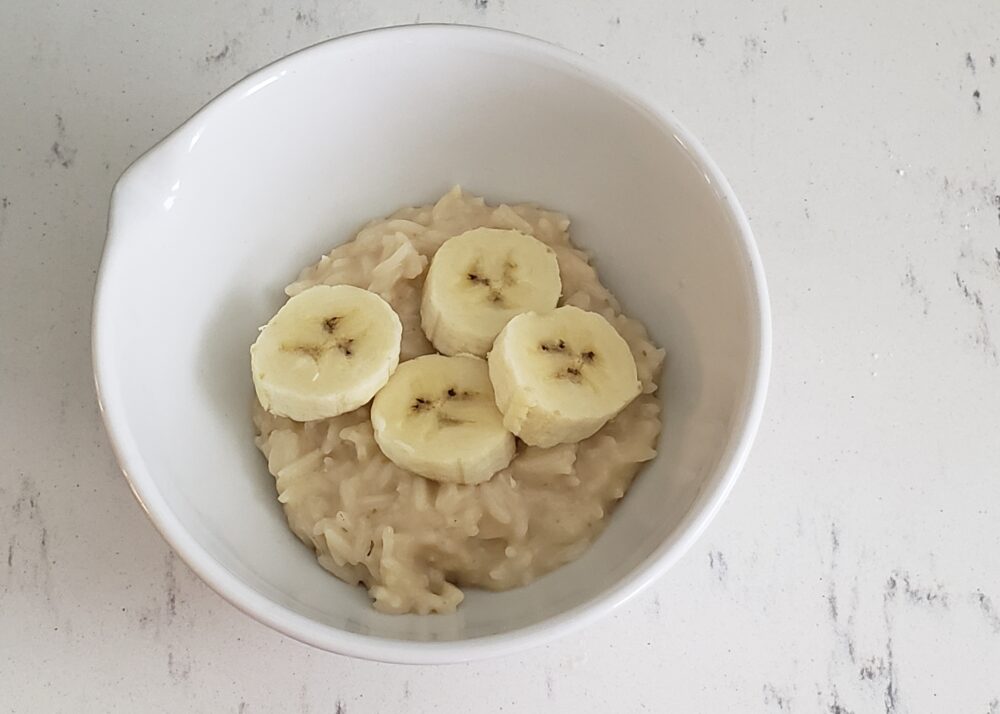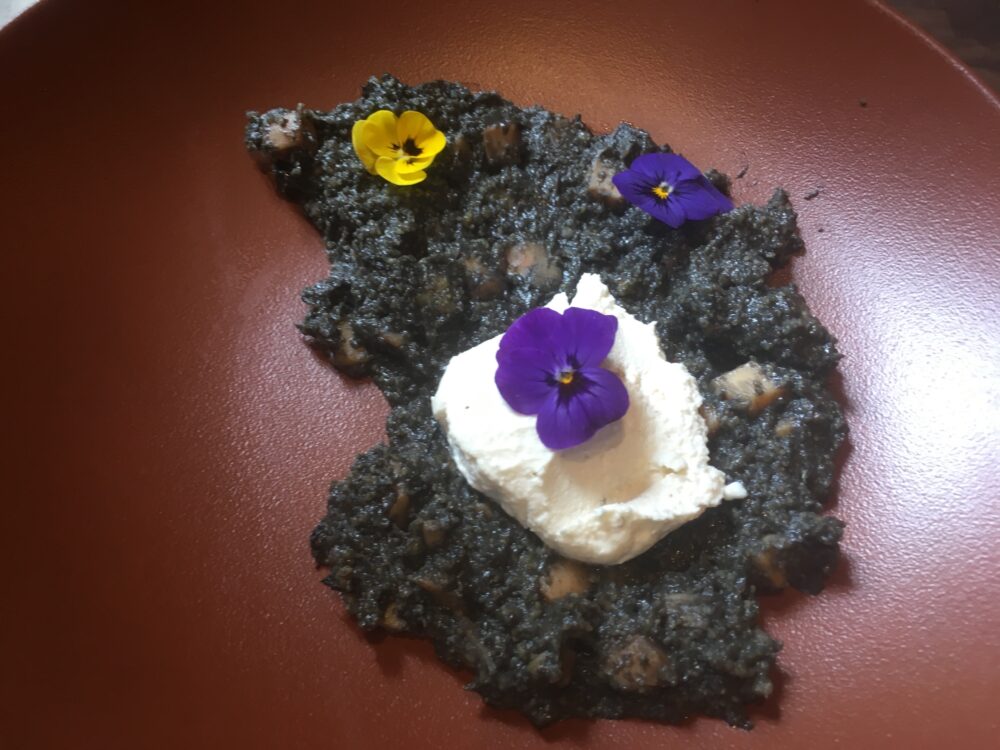I’m not one to eat (or serve my son) fast food. But when the fast food in question is part of the culture and cuisine of another country, I make an exception. For the oil rich country of Brunei, we chose the country’s iconic fast food dish called Nasi Katok.
Who doesn’t like some fried chicken?
THE PLACE AND ITS CUISINE
Brunei, or Brunei Darussalam (which means “abode of peace”) is one of those countries I knew practically nothing about before starting this adventure. But I am a big fan of the cuisine of the country’s surrounding it.
Brunei sits on the island of Borneo in the South China Sea, which also includes parts of Malaysia and Indonesia. It’s a very wealthy country thanks to lots of gas and oil (and not the kind we use to fry the chicken). In fact, the Sultan of Brunei is considered one of the wealthiest people in the world. His wealth is estimated at 40 billion dollars. Considering how cheap the food is, he can eat like a King, or a Sultan.
The country is an official Muslim state (and is the only country in south east Asia to rule by “Sharia Law”) and because of that alcohol is banned and pork products or anything not considered “halal” is prohibited.
Other meats however are more common, especially fish considering its geographic location.
Much like its nearby neighbors of Malaysia, Singapore, and Indonesia), rice and noodles are a major staple food and dishes tend to be very spicy. Herbs, spices, and fruits are common in the cuisine.
Food stalls and fast food, as is evidenced by the dish we attempt, is a common sight through Brunei. The food culture runs deep and from my research, it seems like one I would love to explore.
Traditional dishes:

Ambuyat – the National Dish, this is a very intriguing dish that is made from sago starch and is essentially a flavorless sticky substance that you pick up with a special utensil called a chanda and then dip it in an assortment of spicy sauces or dips
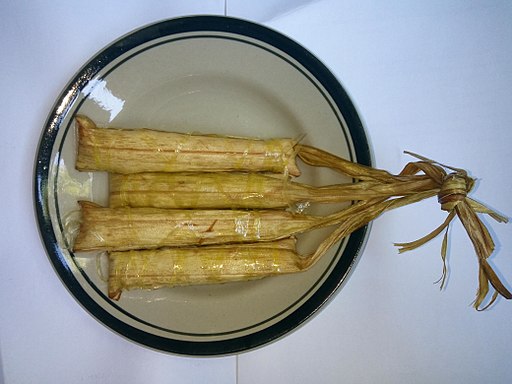
Kelupis – a popular snack or special occasion dish that is gluttonous rice cooked in coconut milk, flavored with pandan, and then wrapped in daun nyirik leaves
Selurut – a steamed rice and sago dessert that is drenched in coconut milk and salt water
Bamboo Chicken – a unique preparation where marinated chicken is stuffed into a bamboo pole with spices and onions and then cooked over an open fire
BURNEIAN FOOD IN NEW YORK
Malaysian and Singaporean food are available in New York, but but sadly under-represented.
Bruneian cuisine, on the other hand, seems impossible. Somebody please help us out here. We need some places to try this unique cuisine. I really need to try Ambuyat and am not able to travel to Brunei any time soon. Seriously – this is why I live in New York!!
THE VIDEO
Brunei is a very exciting video because it is our 25th episode!! Can’t believe we have been doing these for what feels like a quarter of a century.
Sam and I learn a little about math, seasonality, and sarcasm. Along the way we deal with some strong chilies, onions, and a blender that only works when plugged in. Imagine that!
THE DISH
Here in New York, I spend time searching for the best versions of iconic dishes (like pizza and bagels). If I lived in Brunei, no doubt I would be able to tell you where to get the best version of Nasi Katok.
This fried chicken and rice dish is sold throughout the country at restaurants, fast food stands, and markets. It’s available 24 hours a day and is always priced at just $1BND (roughly $.75 USD).
Nasi means “rice” and Katok means “knock”. When this dish first became popular in the 1980’s, the story goes that you had to knock on the windows of the vendors selling it to order. And that’s where the name came from and it stuck.
Chicken is first marinated in lots of bold flavors, including ginger, garlic, turmeric and soy sauce. It’s then dredged with flour (sometimes rice and AP) and then deep fried until golden. It’s served with plain white rice and a signature spicy sauce called sambal, which is usually made from a chili pepper paste and an onion paste. Most vendors serve the chicken and rice wrapped up in brown paper (presumably to soak up all the grease).
This is the basic Nasi Katok recipe, but variations abound mostly when it comes to the sauce. One that is very intriguing and almost made it on our plate is the addition of a rich buttermilk sauce.
SPECIAL INGREDIENTS
Truthfully this dish can be made with nothing out of the ordinary for American kitchens. Maybe tamarind is a bit more difficult to find, but it’s available at most health food stores at this point in both dried and paste form.
Everything else is often added in Brunei but not always. I’ve seen recipes calling for shrimp paste and other unique flavorings, but others without.
I like to try to find as many authentic and unique flavors as possible plus I already had a jar of this on hand from my previous Thai cooking.
Shrimp Paste
Sam likes to smell the ingredients we use, but after his experience with shrimp paste, that tradition might quickly go away.
This is a stinky jar but it adds a ton of funky flavor that balances the sweet, sour, and spicy notes of a dish. And a little goes a long way.
Shrimp paste is a paste made from ground up, dried, and fermented shrimp. It’s important in a lot of Southeast Asian cuisine, including Thai, Malaysian, and of course Brunei.
I happened to have a jar with bean oil, but it is also available without. You should easily be able to find this at any Asian grocery store, especially ones specializing in Southeast Asian ingredients.
THE RECIPES
Inspired by:
Nasi Katok from Brunei
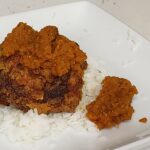
This is the most popular fast food option in Brunei available in every neighborhood at just about every time of day and it always costs just $1. Crispy fried chicken is served with a plate of white rice and a spicy funky sambal sauce.
Sambal (Spicy Sauce)
- 3 white onions (cut into chunks)
- 2 red onions (cut into chunks)
- 3 garlic cloves
- 2 dried chilies (soaked in warm water)
- 4 fresh red chilies
- 1 cup vegetable oil
- 1 tbspn shrimp paste
- 2 tbspn tamarind water
- 2 tspn salt
- 1 tbspn sugar
Fried Chicken
- 1 whole chicken (about 2.5-3 pounds) (separated into pieces)
- vegetable oil
- 2 eggs (beaten)
- 1 tbspn salt
- 1 tspn red chili powder
- 1 tbspn turmeric
- 2 tbspn black pepper
- 1 cup flour
- 1 cup rice flour
- 1 cup corn starch
Sambal
-
Add onion chunks, garlic cloves, and a little water to blender. Blend until smooth, put in bowl, and set aside.
-
Add softened dried chilies, fresh chilies, and shrimp paste to cleaned blender or food processor. Add a little water to get it going and blend to a fine paste. Transfer to separate bowl.
-
Heat vegetable oil in a wok to medium high. Carefully add onion mixture. Mix and lower heat and simmer for about 10 minutes, stirring occassionaly, until the mixture turns a bit darker.
-
Add chilie paste mix and stir.
-
Add tamarind water, sugar, and salt. Stir and let simmer for about an hour.
Marinate Chicken
-
Mix chicken with garlic paste, ginger paste, turmeric, salt, black pepper, red chilie powder, and soy sauce. Marinate for at least 30 minutes and up to overnight.
Fry Chicken
-
Beat eggs in large bowl.
-
Mix flour, rice flour, and corn starch in shallow bowl.
-
Heat oil in fryer or large pot.
-
When oil is hot enough, add chicken first to egg mixture to coat, and then give it a dredge in the flour mixture.
-
Carefully place chicken pieces in hot oil. Fry until golden on each side and cooked through.
-
Serve with rice and sambal sauce.
HOW WE SCREWED IT UP
I should have known when I tried to use the blender without plugging it in that we were in for a total disaster.
And unfortunately, this meal was just that.
Let’s start with the good stuff. The sambal was spicy and funky with a hint of sweet and sourness. I managed to get the sauce nicely balanced and it was bold and tasty. Unfortunately, aside from the white rice, I couldn’t make anything worth putting it on.
I attempted to multitask pretty hardcore while making this meal and it fell apart. I had to take a pretty important phone meeting in the middle of everything and I’m not sure what happened, but dinner time had arrived and we were left with some raw chicken.
The failure really happened in the frying. One big issue was I probably did not put enough oil in the pot. Some of the videos I saw fried the chicken in a shallow amount of oil and I was probably trying to keep my homemade fast food as healthy as possible. The result was a mess.
I got the crust nicely golden and it was crisp and flavorful. But my thick pieces of chicken remained raw inside after I took it out of the oil and put it on our plates. I had to put it back in for a while and eventually throw it in the oven to get the interior to a safe place to consume.
When we finally had something that was not going to give us salmonella, I could tell that Nasi Katok is a delicious plate. I’m just not quite ready to make it at home. Guess I’ll have to start planning my trip to Brunei.
SAM’S REACTION
 As mentioned above, it took forever for this dish to come together. It got so late nd the chicken was still raw and Sam, being a four year old human, was hangry. So we had to put out something for him to eat.
As mentioned above, it took forever for this dish to come together. It got so late nd the chicken was still raw and Sam, being a four year old human, was hangry. So we had to put out something for him to eat.
He ate his favorite hummus and gave it a very favorable review, but never did get to try the Nasi Katok. My guess is if he did have a chance, he would have only tried the rice. And he loves rice, so let’s assume he gave it a positive rating.
NEXT TIME
After all this spicy heat, we’re going to cool things down next week when we head back to the Balkans to the country of Bulgaria. While meat is very common here, we’re going to do something amazing and go completely vegetarian…

